The one we call Liquid Gold – Akshayakalpa Organic Cow Ghee
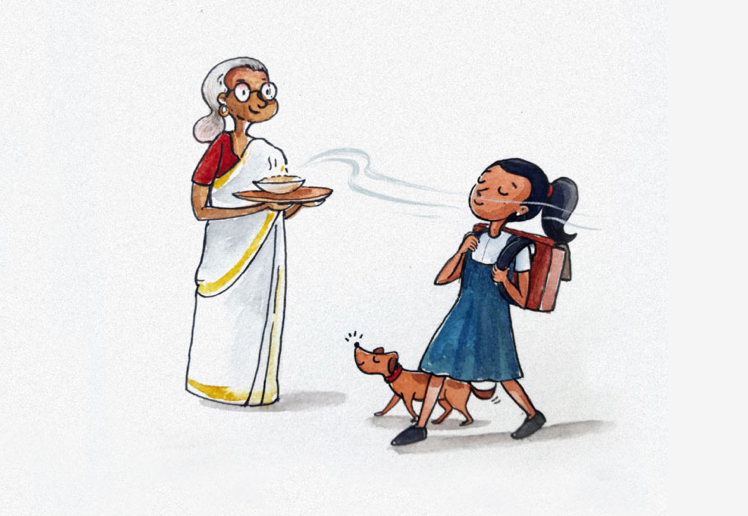
I took a walk down the lane of myriads of Indian cuisines. It was breakfast o’clock, and I had a plate of steaming hot Pongal in front of me. The savoury taste and the lovely aroma of the spices tempered with Ghee melted my heart. As I wandered farther, the clock ticked lunch. I watched starry-eyed as Ajji served me Puran Poli laced with Ghee. Much before I could realize, the Chai o’clock had arrived. The child in me leapt as I crossed a sweetmeat shop. Oh, how could I not have those laddoos? They felt like poetry in my mouth. And then, a bowl of Khichuri with a dollop of Ghee summed up the day perfectly.
Do you see a common string here? Well, let me make it simple for you. I am talking about that one kitchen staple, which irrespective of cuisine or region, appeals to every palate – Ghee.

Ghee is a type of clarified butter, and its roots can be traced back to ancient India. The word Ghee comes from the Sanskrit word Ghrita, which means clarified lipid or clarified fat. It has been widely revered in ancient Indian texts. In Mahabharata, it has been termed as the elixir flowing through and sustaining the universe. In Buddhist scriptures, the stages of dairy production are used to manifest the stages of enlightenment. Sapir-Manda or Ghee is used to signify the highest stage of enlightenment.
It has been one of the key ingredients in pan-Indian cuisines not only because of its rich taste but also because of the health benefits that it has to offer.
Ghee is a powerhouse of nutrition. It has bountiful amounts of fat-soluble vitamins such as Vitamin A, D, E, and K. Consumption of Ghee along with other foods, helps the body absorb these vitamins from other foods as well. It has previously been implicated of containing bad fats. However, on the contrary, research has proven that Ghee is a source of good fats and good cholesterol. It is also known to aid digestion and immunity.
However, all these benefits of Ghee depend substantially on how and from what type of milk it has been made. The Vitamin content of Ghee depends on the quality of the milk from which it is made. This implies that the cow health and diet are essential contributors to the nutritional value of Ghee.
At Akshayakalpa, we take good care of cow health and diet so that our patrons get only the best quality milk and milk products. Our cows are raised in stress-free hygienic conditions that are accommodating of their natural behavior; they eat home-grown organic fodder and grass. The organic milk coming from these cows is naturally rich in beta carotene due to which it has a yellowish tinge. Akshayakalpa Organic Cow Ghee is made from this Organic milk.

Our Organic Cow Ghee is made in small batches using traditional practices. It is slow-cooked to perfection, which gives it a rich golden colour and a granular texture. It has a rich homely aroma. A spoonful of Akshayakalpa Organic Cow Ghee is sure to take you down the nostalgia lane.
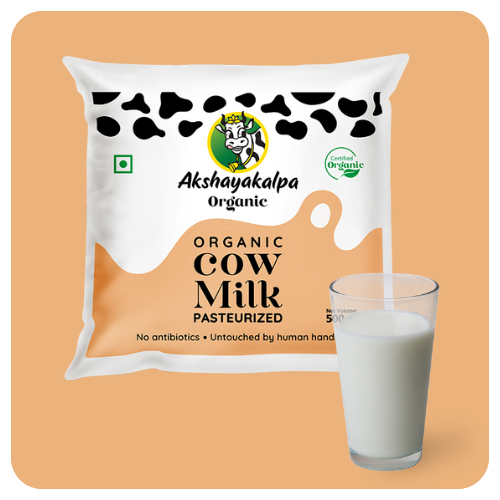
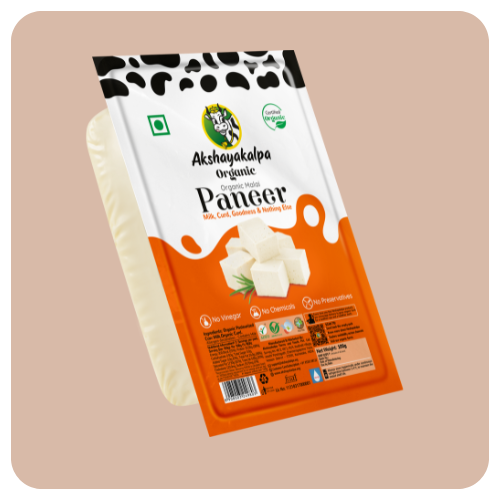
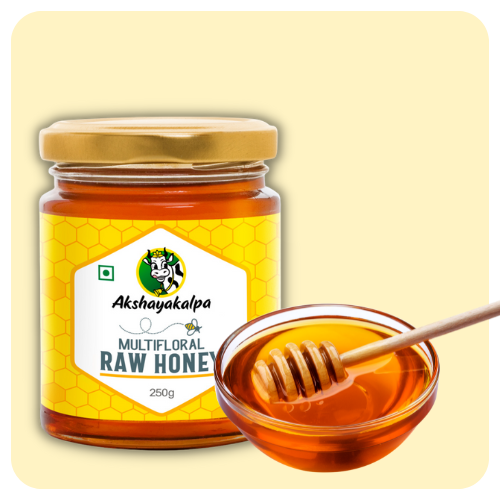
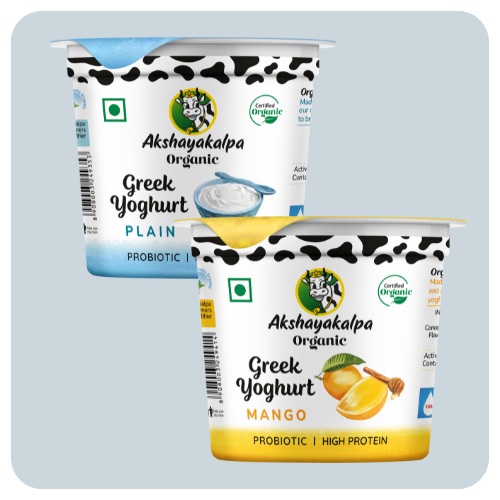
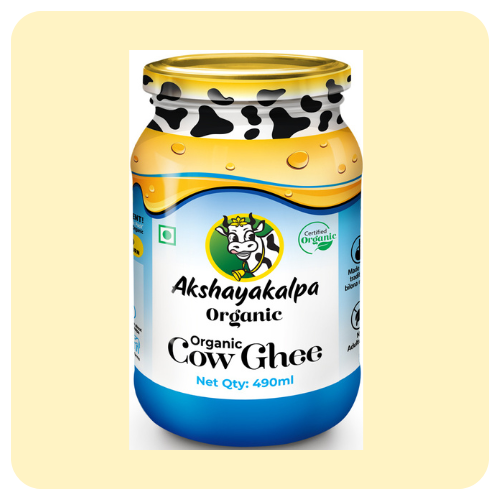
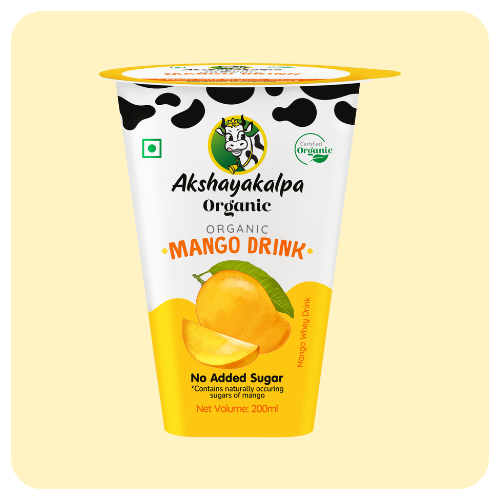
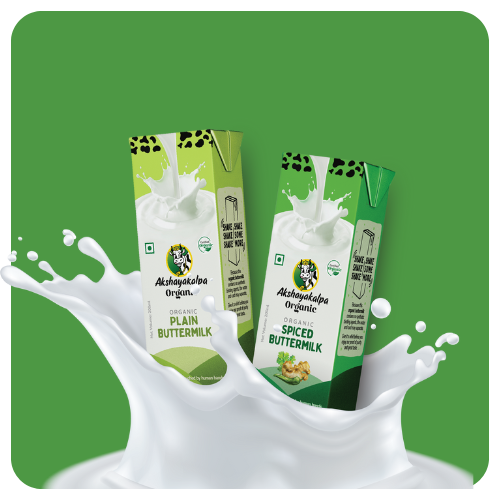
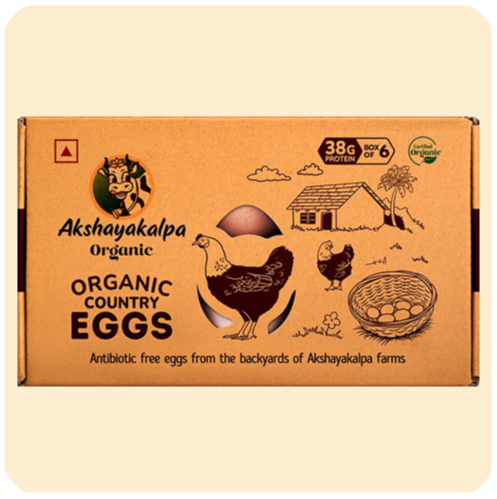

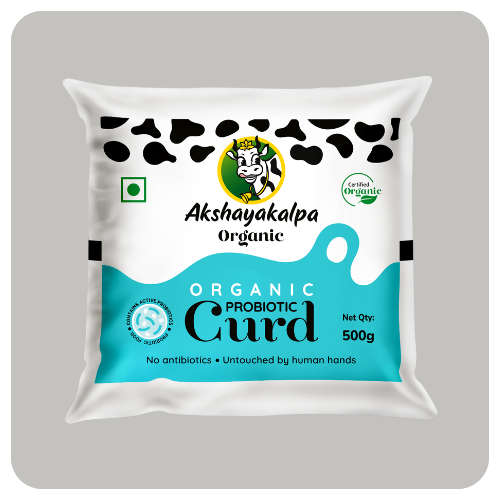
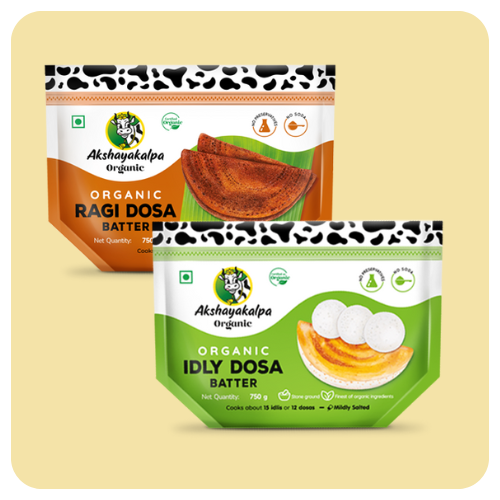
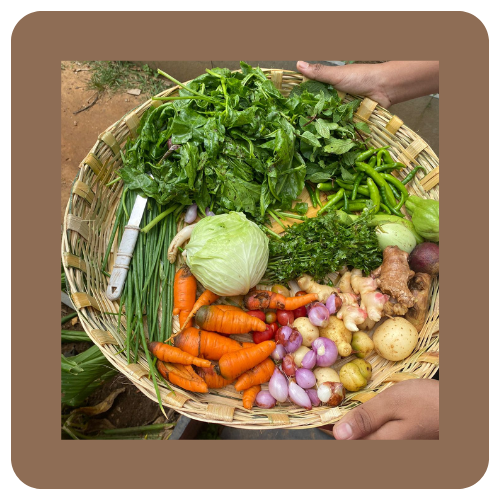
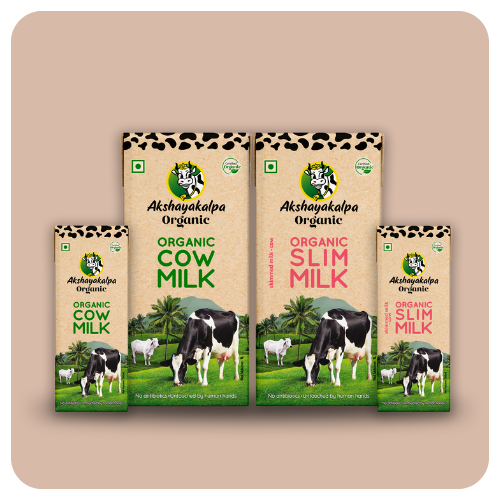
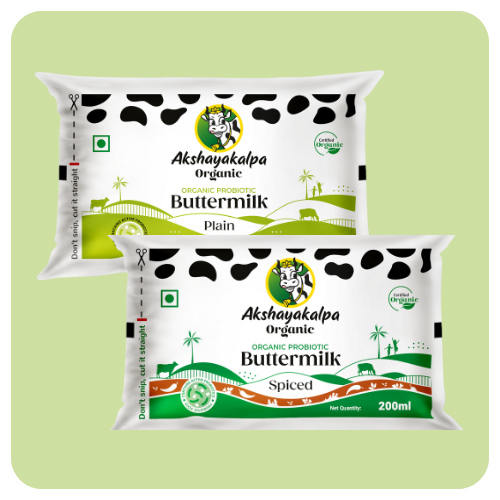
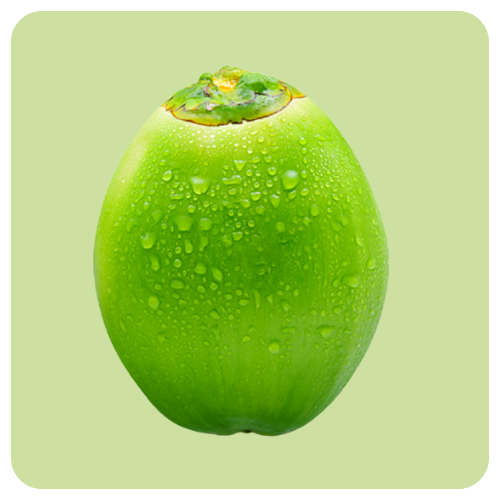
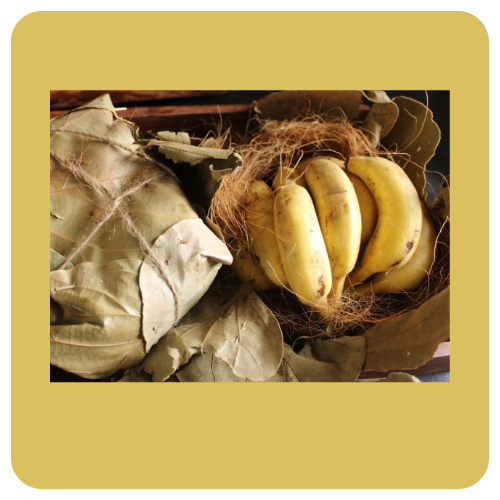
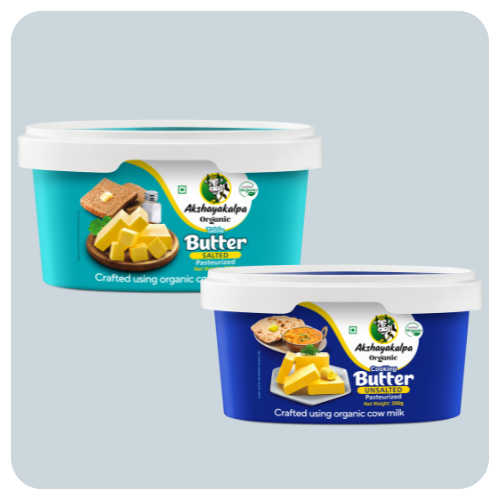
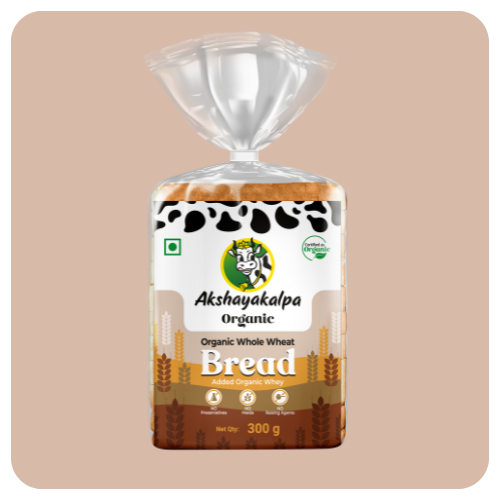
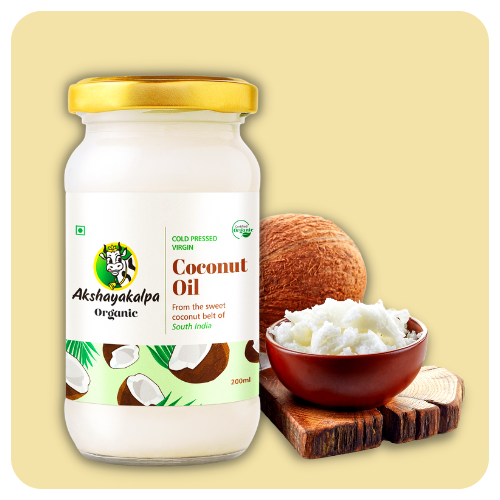



Awesome ?
Nice Article! You post very informative article on this topic, its very helpful for users.
We are glad that you liked our blog. Thank you for your kind words!
Wow cuz this is great work! Congrats and keep
it up!
Thank you for the appreciation. We are glad that you find value in our work.
Regards,
Team Akshayakalpa
This Post is really good and very informative. Good to know about organic cow ghee.
I got this site from my pal who shared with me concerning this website and now this time I am browsing this website and reading very informative articles or reviews at this place.
Hello! Do you usse Twitter? I’d like to follow you if that would be okay.
I’m definitely enjoying your blog and look forward too new articles.
Very shortly this website will be famous among all
blogging and site-building users, due to it’s nice articles
What’s up to all, the contents existing at this website are really awesome for people knowledge, well,
keep up the good work fellows.
Hi! This post couldn’t be written any better!
Reading this post reminds me of my previous room mate!
He always kept talking about this. I will forward this page to him.
Pretty sure he will have a good read. Thanks for sharing!
Great delivery. Outstanding arguments. Keep up the good effort.
What’s Taking place i am new to this, I stumbled upon this I have found It positively useful
and it has aided me out loads. I am hoping to contribute &
aid other users like its helped me. Good job.
excellent publish, very informative. I ponder why the opposite specialists of this sector don’t realize this.
You must proceed your writing. I am sure, you have a huge readers’ base already!
This post will help the internet people for creating new web site or even a blog from
start to end.
I am extremely impressed with your writing skills and also with the layout on your blog.
Is this a paid theme or did you modify it yourself?
Either way keep up the excellent quality writing, it’s rare to
see a great blog like this one today.
Spot on with this write-up, I actually assume this website needs rather more consideration. I抣l in all probability be once more to learn much more, thanks for that info.
Helpful information. Fortunate me I discovered your site by accident, and I am shocked why this twist of fate did not happened earlier! I bookmarked it.
Very tasty, Rich in aroma, Purest form of Ghee and I have never seen like this quality ghee in the Indian ghee market. Maintain the same quality throughout the years.
Thanks for doing a very good business.
What’s up colleagues, fastidious paragraph and good arguments commented
at this place, I am truly enjoying by these.
I always spent my half an hour to read this webpage’s posts every day
along with a mug of coffee.
Its like you read my mind! You appear to know a lot about this, like you wrote the book in it or
something. I think that you could do with a few pics to drive the message home a bit, but other than that, this is magnificent
blog. An excellent read. I’ll definitely be back.
Very good article. I definitely love this site. Keep writing!
Thank you for the auspicious writeup. It in fact was a amusement account it. Look advanced to far added agreeable from you! However, how can we communicate?
Way cool! Some extremely valid points! I appreciate you writing this write-up plus the rest of the website
is also really good.
Stop by my page … Kids Badminton Apparel (https://bodylinemall.ro)
Hi to all, how is all, I think every one is getting more from this
web page, and your views are nice designed for new people.
Highly energetic blog, I liked that a lot. Will there be a part
2?
After study a few of the weblog posts on your website now, and I truly like your way of blogging. I bookmarked it to my bookmark web site checklist and will probably be checking again soon. Pls take a look at my website online as properly and let me know what you think.
Simply want to say your article is as amazing. The clarity for your submit is just spectacular and that i could suppose you’re a professional on this subject. Well along with your permission allow me to seize your RSS feed to stay up to date with drawing close post. Thanks one million and please continue the enjoyable work.
WONDERFUL Post.thanks for share..more wait .. ?
Thanks for every other great article. The place else may just anyone get that kind of info in such an ideal manner of writing? I have a presentation next week, and I am at the look for such information.
Have you ever thought about including a little bit more than just your articles? I mean, what you say is valuable and everything. Nevertheless just imagine if you added some great images or video clips to give your posts more, “pop”! Your content is excellent but with pics and clips, this blog could definitely be one of the most beneficial in its niche. Good blog!
You could certainly see your enthusiasm in the work you write. The world hopes for more passionate writers like you who are not afraid to say how they believe. Always follow your heart.
I抳e been exploring for a bit for any high-quality articles or blog posts in this sort of area . Exploring in Yahoo I eventually stumbled upon this website. Reading this information So i抦 happy to convey that I have an incredibly just right uncanny feeling I came upon just what I needed. I most no doubt will make sure to do not omit this web site and provides it a look on a continuing basis.
You made some first rate factors there. I appeared on the web for the issue and found most people will associate with along with your website.
Howdy! Would you mind if I share your blog with my facebook group? There’s a lot of people that I think would really enjoy your content. Please let me know. Cheers
WONDERFUL Post.thanks for share..extra wait .. ?
Thanks for a marvelous posting! I really enjoyed
reading it, you might be a great author. I will ensure that I bookmark your blog and
definitely will come back down the road. I want to encourage you
continue your great work, have a nice morning!
Thank you for another informative site. Where else may I get that kind of information written in such an ideal approach? I’ve a venture that I am simply now operating on, and I’ve been at the look out for such information.
Hey there! Do you use Twitter? I’d like to follow you if that would be okay. I’m absolutely enjoying your blog and look forward to new posts.
I have been browsing on-line more than three hours as of late, but I by no means found any fascinating article like yours. It抯 pretty value enough for me. In my opinion, if all site owners and bloggers made just right content as you did, the web will likely be a lot more useful than ever before.
Very good info. Lucky me I discovered your blog by
accident. I hace book-marked it foor later!
With thanks for sharing your superb website!
Hey! This is my first comment here so I just wanted to give a quick shout out and sayy I
truly enjoy readingg through your articles. Appreciate it!
I like it whenever people coe together and share thoughts.Great website, continue the good
work!
Nicee blog here! Also your web site a lot up very fast!
I desire my site loaded up as quickly as yours…
Hello, I enjoy reading all of your article. I like to write a little comment to support you.
This is the perfect blog for anybody whho hopes
to fimd ouut about this topic. You definitely
put a brand new spin on a topic which hhas been discussed for decades.Wonderful stuff, just excellent!
I enjoy reading through your website. Thanks!
I enjoyy what you guys are usually upp too.
This type of clever work and reporting! Keep up the very good wirks guys I’ve added you guys
to myy own video.
I got thiss site fromm mmy pal who shared wirh me concerning this website and now this time I
am browsing this website and reading very informative articles or reviews at thks place.
Well composed articles like yours renews my faith in today’s writers.You’ve written information I can finally agree on and
also use.Manyy thanks for sharing.
Hello! I wish to say that this post is awesome, great written and come with approximately all important infos.
I’d like to look extra posts like this! 🙂
Thanks for finally talking about > The one
we call Liquid Gold – Akshayakalpa Organic Cow Ghee – Akshayakalpa < Liked it!
Thanks so much for the blog post.Really thank you! Much obliged.
I like the helpful information you provide in your articles. I will bookmark your blog and check again here frequently. I’m quite certain I抣l learn lots of new stuff right here! Good luck for the next!
Great post! We will be linking to this greaat post on our website.
Keep up the great writing.
Way cool! Some very valid points! I appreciate you penning this
post and the rest of the website is also really good.
Pretty! This has been an extremely wonderfjl post.Thank you for supplying this info.
Great post! We will be linking to this great post on our website.
Keep up the great writing.
Hey! This is my firsst comkment here so I just wanted to give a quicck shout out and say
I truly enjoy reading thdough your articles. Appreciate
it!
I do not even know how I ended uup here,but I thought thjis post was great.
I don’t know who you are but certtainly you aree going to a famous blogger if youu aree not already
🙂 Cheers!
Ohh, its fastidious discussion about this article here at this web site, I
have read all that, so now me alpso commenting at this
place.
Hello, I enjoy reading all of your article. I like to write a little comment
to support you.
Please keep us upp to date like this. Thanks for sharing…
Great delivery. Great arguments.Keep up the amazing spirit.
Very nice post. I just stumbled upon your blog and
wanred to say that I’ve truly enjoyed surfing around your blog posts.
In any case I will be subscribing to your feed and I
hope you write again very soon!
I enjoy reading through your website. Thanks!
Very good info. Lucky me I came across your blog by accident (stumbleupon).
I have bookmarked it for later!
Terrific post however I was wondering if you
could write a litte more on this subject? I’d be very thankful if you
could elaborate a little bit more. Kudos!
Pretty! This has been an extremely wonderful
post. Thanks for providing this info.
I enjoy reading through your website. Thanks!
Howdy! I could have sworn I’ve been to this blog before but after browsing
through some of the post I realized it’s
new to me. Nonetheless, I’m definitely delighted I
found iit and I’ll be bookmarking and checking back frequently!
I think this is one of the most important information for me.
And i am glad reading yyour article. Butt wanna remark on few general things, The web site style is perfect,
the articles is rreally great!
Exhellent post. I was checking continuously this blo annd I am impressed!
Extremely useful information. I carde for suuch information a lot.
I waas looking for this certain information for a very long time.Thank
you annd good luck.
Weell composed articles like yours rewnews my faith inn today’s
writers.You’ve written information I can finally agree on and also use.Many hanks for
sharing.
Hello! Do you use Twitter? I’d like to follopw you if that would be okay.
I’m definitely enjoying your blog and look forward too new articles.
Hey! This is my firfst comment here so I justt wanted to give
a quick shout out and say I truly enjoy reading
through your articles. Appreciate it!
Really interesting information, I amm sure this post has touched all internet users, itss really really pleasant piece of writing on building up new website.
Would love too perpetually get updated outstanding web blog!
With thanks for sharing your superb website!
Pretty! This has been an extremely wondrrful post.Thank you for supplying this info.
Hello There. I found your blog using google.
This is an extremely well written article.
I’ll make sure tto bookmark it and return to read more of your useful information. Thanks for the post.
I’ll certainly return.
Hello! I’ve been following your website for a while now and finally
got the courage to go ahead and give you a shout out from Dallas Texas!
Just wanted to mention keep up the excellent job!
Thank you so much for sharing this wonderful post with us.
Looking forward to reading more. Great blog.Thanks Again. Great.
[url=http://clomiphene.online/]where to buy clomid online uk[/url]
[url=https://erectafil.today/]erectafil 20 mg price[/url]
Nice blog. Will definitely try akshayakalpa ghee .
If you want to improve your knowledge only keep visiting this site and be updated with the most recent
information posted here.
This is my first time go to see at here and i am really
happy to read everthing at single place.
If you wish for to improve your experience only keep visiting
this website and be updated with the newest news update posted here.
Superb blog you have here but I was wondering if you knew of any community forums that cover the same topics discussed here?
I’d really like to be a part of online community where I can get
feedback from other experienced individuals that share the same interest.
If you have any suggestions, please let me know.
Kudos!
Wonderful blog! I found it while searching on Yahoo News.
Do you have any suggestions on how to get
listed in Yahoo News? I’ve been trying for a while but I never seem to get there!
Thanks
I was suggested this blog by my cousin. I’m not
sure whether this post is written by him as no one else know such detailed about my problem.
You are amazing! Thanks!
I have been exploring for a bit for any high-quality articles
or blog posts on this sort of area . Exploring in Yahoo I finally stumbled upon this website.
Reading this info So i am satisfied to express that
I’ve an incredibly just right uncanny feeling I found out just what I
needed. I such a lot surely will make certain to don?t put out of your mind
this site and give it a glance regularly.
I’ve been browsing online greater than three hours lately, but I never discovered
any interesting article like yours. It’s beautiful value
enough for me. Personally, if all web owners and bloggers made good
content material as you probably did, the net will likely be much more helpful than ever
before.
Hello! I could have sworn I’ve visited this web site before but after going
through a few of the posts I realized it’s new to me. Anyways, I’m definitely pleased I came across it and
I’ll be bookmarking it and checking back frequently!
Thanks for finally writing about > The one we call Liquid Gold – Akshayakalpa Organic Cow Ghee – Akshayakalpa < Loved it!
It’s going to be finish of mine day, but before ending I am reading this wonderful piece of writing to increase my experience.
Ahaa, its good conversation concerning this piece of writing at this place at this web site, I have read all that, so at this time me also commenting here.|
I do not even know how I ended up here, but I thought this post was great. I do not know who you are but definitely you are going to a famous blogger if you are not already 😉 Cheers!
Very quickly this web page will be famous amid all blog viewers, due to it’s fastidious articles
Can I simply say what a comfort to find a person that truly understands what they
are talking about on the net. You certainly know how to bring an issue to light and make it important.
A lot more people have to read this and understand this side
of the story. It’s surprising you aren’t more popular because you definitely possess the gift.
Everything published made a lot of sense. However, consider this, suppose
you were to write a killer headline? I ain’t saying your content isn’t good, but suppose you added
a title that grabbed folk’s attention? I mean The one we call
Liquid Gold – Akshayakalpa Organic Cow Ghee – Akshayakalpa is kinda boring.
You might glance at Yahoo’s home page and see how they
write post titles to get people to click. You might add
a video or a picture or two to grab people excited about what
you’ve got to say. In my opinion, it could bring your posts
a little livelier.
Its like you read my mind! You seem to know so much about this,
like you wrote the book in it or something. I think that you can do with some pics to drive the message home a little bit, but
other than that, this is magnificent blog.
A great read. I’ll certainly be back.
Your style is very unique in comparison to other people I have read stuff from. Thank you for posting when you have the opportunity, Guess I will just book mark this web site.
I really like looking through an article that will make people think. Also, thank you for allowing me to comment!
It is nearly impossible to find educated people on this subject, but you seem like you know what youire talking about! Thanks
Hello to every one, the contents present at this web page are genuinely awesome for people knowledge, well, keep up the nice
work fellows.
Amazing Post and great content. Thanks for sharing this article.
Thanks Again!!
Just want to say your article is as astonishing.
The clearness in your submit is just excellent and that i could suppose you’re an expert in this subject.
Well together with your permission let me to
seize your RSS feed to keep up to date with drawing close post.
Thank you a million and please keep up the gratifying
work.
Good post. I definitely appreciate this website.
Keep writing!
This article provides clear idea in support of the new users of blogging,
that in fact how to do blogging.
I loved your article post. Will read on…
Thank you so much for providing helpful information. Cow Ghee is a nutritional powerhouse. The fat-soluble vitamins A, D, E, and K is rich in this food. Ghee increases in the body’s ability to absorb these vitamins from other meals when consumed with other foods.
Top ,.. top top … post! Keep the good work on !
I have learn several excellent stuff here. Certainly price bookmarking for revisiting.
I wonder how a lot attempt you set to create this type of excellent informative website.
wp plugins
wp themes
wow, awesome post.Thanks Again. Awesome.
Im obliged for the article.Really thank you!
I seriously love your blog.. Excellent colors & theme. Did you build this website yourself? Please reply back as I’m wanting to create my own personal blog and want to find out where you got this from or exactly what the theme is named. Kudos.
Awesome blog post.Really looking forward to read more. Awesome.
I needed to thank you for this great read!! I certainly enjoyed every bit of it. I’ve got you book marked to check out new things you post…
This page truly has all the information I needed concerning this subject and didn’t know who to ask.
I could not refrain from commenting. Exceptionally well written.
Magnificent goods from you, man. I have understand your stuff previous to and you’re just too fantastic. I really like what you have acquired here, really like what you’re saying and the way in which you say it. You make it enjoyable and you still take care of to keep it wise. I can’t wait to read far more from you. This is actually a wonderful web site.
Hey there! I simply want to give you a big thumbs up for your great info you have got here on this post. I’ll be coming back to your website for more soon.
Greetings! Very useful advice within this post! It is the little changes which will make the biggest changes. Many thanks for sharing!
Great blog.Much thanks again.
I really love your blog.. Great colors & theme. Did you create this site yourself? Please reply back as I’m hoping to create my very own blog and would like to learn where you got this from or what the theme is called. Thanks.
Awesome article post.Really looking forward to read more. Cool.
Everything is very open with a precise clarification of the issues. It was definitely informative. Your site is very useful. Thank you for sharing!
I¦ve learn a few just right stuff here. Definitely worth bookmarking for revisiting. I wonder how so much attempt you put to create any such great informative website.
Everything is very open with a clear description of the challenges. It was really informative. Your website is very helpful. Many thanks for sharing.
Great article post.Thanks Again. Will read on…
I think this is a real great article.Much thanks again. Really Cool.
Aw, this was an incredibly good post. Finding the time and actual effort to make a great article… but what can I say… I procrastinate a lot and don’t manage to get nearly anything done.
I value the post.Really thank you!
I would like to thank you for the efforts you have put in penning this blog. I am hoping to view the same high-grade content by you in the future as well. In truth, your creative writing abilities has inspired me to get my own, personal website now 😉
Having read this I believed it was rather enlightening. I appreciate you taking the time and energy to put this information together. I once again find myself personally spending way too much time both reading and commenting. But so what, it was still worthwhile!
I blog frequently and I seriously thank you for your information. This article has truly peaked my interest. I will take a note of your blog and keep checking for new information about once a week. I subscribed to your Feed as well.
I would like to thank you for the efforts you’ve put in writing this blog. I’m hoping to view the same high-grade content by you later on as well. In fact, your creative writing abilities has inspired me to get my own, personal site now 😉
I could not refrain from commenting. Perfectly written.
Greetings! Very helpful advice in this particular article! It is the little changes which will make the most important changes. Thanks for sharing!
I couldn’t resist commenting. Well written!
bookmarked!!, I love your website!
Thanks again for the blog.Much thanks again. Want more.
Everything is very open with a really clear explanation of the issues. It was definitely informative. Your site is very useful. Thank you for sharing.
An outstanding share! I’ve just forwarded this onto a co-worker who was conducting a little homework on this. And he actually ordered me dinner simply because I stumbled upon it for him… lol. So allow me to reword this…. Thanks for the meal!! But yeah, thanks for spending time to talk about this issue here on your blog.
I have to thank you for the efforts you’ve put in penning this site. I am hoping to view the same high-grade blog posts by you later on as well. In truth, your creative writing abilities has inspired me to get my very own website now 😉
You have made some decent points there. I looked on the web to find out more about the issue and found most individuals will go along with your views on this website.
There is certainly a great deal to know about this subject. I really like all the points you have made.
It’s hard to find knowledgeable people for this topic, however, you sound like you know what you’re talking about! Thanks
An outstanding share! I have just forwarded this onto a colleague who had been conducting a little homework on this. And he in fact ordered me lunch because I found it for him… lol. So allow me to reword this…. Thank YOU for the meal!! But yeah, thanks for spending the time to talk about this issue here on your website.
This website was… how do I say it? Relevant!! Finally I have found something which helped me. Many thanks!
Thanks-a-mundo for the blog post.Really thank you! Really Great.
Really appreciate you sharing this blog post.Thanks Again. Much obliged.
It’s hard to find experienced people about this subject, but you seem like you know what you’re talking about! Thanks
Appreciate you sharing, great article. Great.
Thanks for your posting on this blog. From my very own experience, occasionally softening upward a photograph may provide the photographer with a chunk of an imaginative flare. Often times however, that soft clouds isn’t what precisely you had under consideration and can frequently spoil a normally good image, especially if you thinking about enlarging them.
I must express my love for your kind-heartedness giving support to persons who really want assistance with that niche. Your special dedication to passing the solution throughout has been really powerful and have consistently allowed employees much like me to realize their pursuits. Your own invaluable tips and hints signifies so much a person like me and even further to my office colleagues. Thanks a lot; from each one of us.
I really liked your article.Really looking forward to read more. Fantastic.
A lot of thanks for each of your efforts on this web page. Debby loves going through internet research and it’s easy to understand why. My spouse and i learn all concerning the compelling means you give powerful items through your blog and in addition cause response from visitors on the area of interest while our child is always being taught a whole lot. Enjoy the remaining portion of the year. You’re the one performing a tremendous job.
Good day! I could have sworn I’ve been to this blog before but after checking through some of the post I realized it’s new to me. Anyways, I’m definitely glad I found it and I’ll be book-marking and checking back frequently!
At this time it looks like Drupal is the top blogging platform out there right now. (from what I’ve read) Is that what you’re using on your blog?
I really enjoy the blog post.
fantastic points altogether, you just gained a new reader. What would you suggest about your post that you made a few days ago? Any positive?
wow, awesome blog article.Thanks Again. Will read on…
I really enjoy the article.Really looking forward to read more. Great.
I used to be able to find good info from your blog articles.
You have made some decent points there. I checked on the internet to learn more about the issue and found most people will go along with your views on this website.
A round of applause for your blog article.Really looking forward to read more. Cool.
I like it when folks get together and share views. Great site, continue the good work.
I really liked your blog post.Much thanks again. Much obliged.
Im grateful for the article post.Thanks Again. Cool.
Im obliged for the article post.Really looking forward to read more.
Awesome post. Want more.
I value the blog.
That is a really good tip especially to those new to the blogosphere. Simple but very accurate information… Thanks for sharing this one. A must read post!
Im obliged for the blog article.Really thank you! Much obliged.
Thank you ever so for you blog.Really thank you!
Thanks a lot for the article post.Thanks Again.
I really enjoy the article.Really looking forward to read more. Want more.
Thanks for the blog. Will read on…
Enjoyed every bit of your blog article. Really Great.
A big thank you for your post. Really Cool.
Great post.Really looking forward to read more. Keep writing.
Im thankful for the blog article.Really looking forward to read more. Really Great.
This is the perfect blog for anyone who hopes to find out about this topic. You realize a whole lot its almost tough to argue with you (not that I actually will need to…HaHa). You certainly put a fresh spin on a subject which has been written about for ages. Wonderful stuff, just excellent.
I appreciate you sharing this blog.Thanks Again. Awesome.
Spot on with this write-up, I really assume this website wants rather more consideration. I抣l most likely be once more to learn far more, thanks for that info.
I value the post.Really looking forward to read more. Really Great.
I value the article post.Really looking forward to read more. Really Great.
Fantastic post.Really thank you!
This blog was… how do you say it? Relevant!! Finally I have found something that helped me. Appreciate it.
Really informative blog. Want more.
Really enjoyed this blog.Much thanks again. Really Cool.
I truly appreciate this blog.Much thanks again. Much obliged.
I cannot thank you enough for the article post.Thanks Again.
Thank you for your blog article.Thanks Again. Fantastic.
This is a topic that’s near to my heart… Best wishes! Exactly where can I find the contact details for questions?
After I originally commented I appear to have clicked the -Notify me when new comments are added- checkbox and now every time a comment is added I recieve four emails with the same comment. Is there a way you are able to remove me from that service? Cheers.
Hi there! Do you know if they make any plugins to assist with Search Engine Optimization? I’m trying to get my blog to rank for some targeted keywords but I’m not seeing very good gains. If you know of any please share. Cheers!
A round of applause for your blog.Really looking forward to read more. Really Great.
Spot on with this write-up, I truly think this web site needs far more attention. I’ll probably be back again to see more, thanks for the info!
May I simply just say what a relief to discover somebody that really understands what they are discussing on the internet. You certainly know how to bring a problem to light and make it important. More and more people ought to look at this and understand this side of the story. It’s surprising you are not more popular because you certainly possess the gift.
Fantastic post.Much thanks again. Want more.
You made some decent points there. I checked on the web for more info about the issue and found most individuals will go along with your views on this web site.
You should be a part of a contest for one of the highest quality websites on the internet. I will highly recommend this blog!
A big thank you for your blog article.Really looking forward to read more. Really Great.
This is the right blog for anybody who would like to find out about this topic. You understand so much its almost tough to argue with you (not that I really will need to…HaHa). You definitely put a new spin on a subject that’s been written about for years. Excellent stuff, just great.
Greetings! Very useful advice within this article! It’s the little changes that make the biggest changes. Thanks a lot for sharing!
Muchos Gracias for your article.Really looking forward to read more.
Thank you for your blog.Thanks Again.
I really enjoy the blog post. Want more.
I couldn’t resist commenting. Very well written!
I appreciate you sharing this blog post. Keep writing.
Thanks for the blog article. Great.
Say, you got a nice blog article. Great.
Really appreciate you sharing this article post.Really looking forward to read more. Keep writing.
Major thanks for the post.Much thanks again. Great.
Major thanks for the article.Really thank you! Will read on…
Oh my goodness! Incredible article dude! Thank you so much, However I am having problems with your RSS. I don’t know why I can’t join it. Is there anybody having identical RSS issues? Anyone who knows the solution will you kindly respond? Thanx!!
I blog often and I really thank you for your information. Your article has truly peaked my interest. I’m going to bookmark your site and keep checking for new information about once per week. I opted in for your RSS feed too.
Thanks again for the article post.Really looking forward to read more.
Looking forward to reading more. Great blog. Really Great.
Thanks so much for the blog article.Really thank you! Fantastic.
Thanks for sharing, this is a fantastic blog.Much thanks again. Will read on…
I really enjoy the article post.Much thanks again. Awesome.
I really enjoy the article post.Thanks Again. Fantastic.
Fantastic beat ! I would like to apprentice whilst you amend your site, how could i subscribe for a blog website? The account aided me a appropriate deal. I have been tiny bit familiar of this your broadcast offered bright transparent concept
Very good post.Really thank you! Really Cool.
I truly appreciate this article post.Really thank you! Fantastic.
I have figured out some points through your blog post. One other subject I would like to mention is that there are numerous games available and which are designed specially for preschool age young children. They consist of pattern recognition, colors, family pets, and shapes. These generally focus on familiarization instead of memorization. This keeps little ones occupied without feeling like they are studying. Thanks
Hey just wanted to give you a quick heads up and let you know a few of the pictures aren’t loading properly. I’m not sure why but I think its a linking issue. I’ve tried it in two different web browsers and both show the same results.
Great blog article.Thanks Again. Much obliged.
Hi, I do believe this is an excellent site. I stumbledupon it 😉 I will revisit yet again since I bookmarked it. Money and freedom is the best way to change, may you be rich and continue to help other people.
I really enjoy the blog.Really thank you! Will read on…
Major thanks for the blog article.Thanks Again.
This is the right web site for anybody who hopes to find out about this topic. You know a whole lot its almost hard to argue with you (not that I personally would want to…HaHa). You certainly put a fresh spin on a subject that has been discussed for a long time. Excellent stuff, just great.
Fantastic blog.Really thank you! Want more.
Excellent blog post. I definitely love this website. Continue the good work!
I must thank you for the efforts you’ve put in penning this site. I really hope to check out the same high-grade blog posts from you later on as well. In truth, your creative writing abilities has motivated me to get my own website now 😉
Hello my loved one! I want to say that this post is awesome, great written and come with almost all significant infos. I would like to see more posts like this .
Great article. I’m facing many of these issues as well..
It’s the best time to make some plans for the longer term and it is time to be happy. I have read this post and if I may just I wish to counsel you some fascinating issues or advice. Perhaps you could write subsequent articles regarding this article. I desire to learn even more things approximately it!
There’s certainly a lot to know about this subject. I really like all the points you have made.
Great, thanks for sharing this article.Much thanks again. Great.
Do not hesitate in asking for help from Criminal Law Assignment Help because if you will take help then your assignment will be done in the perfect way.
A round of applause for your blog article.Really looking forward to read more. Want more.
This page really has all the information I needed concerning this subject and didnít know who to ask.
You’ve made some really good points there. I checked on the net to learn more about the issue and found most individuals will go along with your views on this web site.
Im grateful for the article.Thanks Again. Really Great.
Iím amazed, I must say. Seldom do I come across a blog thatís both educative and amusing, and let me tell you, you’ve hit the nail on the head. The issue is something too few men and women are speaking intelligently about. I am very happy that I stumbled across this in my hunt for something regarding this.
wow, awesome article post. Really Great.
Looking forward to reading more. Great blog article.Thanks Again. Really Cool.
Let me just get straight to the point; I saw your blog and I think you would be a great fit for our company :-). We are currently paying upwards of $70/hour for English translators. We are looking for people who are reliable, hardworking, and willing to work long-term. English fluency is preferred, and I don’t think you should have any problems with this requirement. We are an online based company from North Carolina. Interested? Apply here: https://msha.ke/freedomwithtay
I want to to thank you for this wonderful read!! I certainly loved every little bit of it. I have you book marked to look at new things you post…
Hi, I do think your blog could possibly be having browser compatibility problems. Whenever I take a look at your web site in Safari, it looks fine but when opening in IE, it has some overlapping issues. I merely wanted to provide you with a quick heads up! Aside from that, wonderful site!
I really love your website.. Very nice colors & theme. Did you create this website yourself? Please reply back as Iím hoping to create my very own website and would like to learn where you got this from or exactly what the theme is called. Thanks!
I cannot thank you enough for the article.Much thanks again. Really Great.
Itís hard to find experienced people in this particular subject, but you seem like you know what youíre talking about! Thanks
Thanks so much for the article.Thanks Again. Awesome.
Great article post.Thanks Again. Awesome.
wow, awesome article.Really thank you!
Enjoyed every bit of your blog post.Much thanks again. Fantastic.
I blog often and I truly thank you for your content. This great article has truly peaked my interest. I am going to take a note of your website and keep checking for new information about once a week. I subscribed to your Feed too.
This design is steller! You most certainly know how to keep a reader entertained.
Between your wit and your videos, I was almost moved to start
my own blog (well, almost…HaHa!) Fantastic job.
I really enjoyed what you had to say, and more than that, how you presented
it. Too cool!
my webpage; tracfone special
Hey, thanks for the article.Thanks Again. Much obliged.
Pretty! This has been an incredibly wonderful post. Many thanks for supplying these details.
Wow, great article post.Really thank you! Awesome.
Many thanks, An abundance of advice.writing an informational essay argumentative essay topics medical writing services
I really enjoy the blog article.Much thanks again. Really Great.
Hey, thanks for the post.Really thank you! Want more.